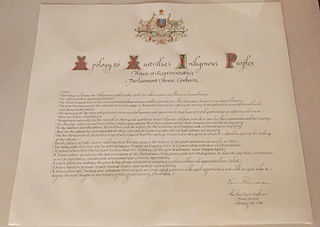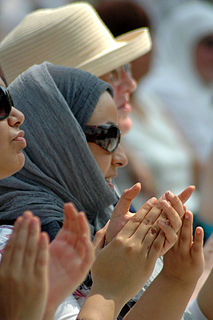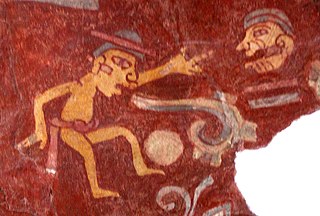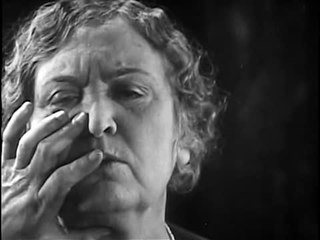 W
WAn apology is an expression of regret or remorse for actions, while apologizing is the act of expressing regret or remorse. In informal situations, it may be called saying sorry. The goal of apologizing is generally forgiveness, reconciliation and restoration of the relationship between the people involved in a dispute.
 W
WApplause is primarily a form of ovation or praise expressed by the act of clapping, or striking the palms of the hands together, in order to create noise. Audiences usually applaud after a performance, such as a musical concert, speech, or play, as a sign of enjoyment and approval. Clapping nowadays is very popular and in most countries audience members clap their hands at random to produce a constant noise. It tends to synchronize naturally to a weak degree; in Russia, Norway and many northern and eastern European countries synchronized clapping is more popular than random clapping.
 W
W"Chew the fat" or "chew the rag" are English expressions for gossiping or making friendly small talk, or a long and informal conversation with someone.
 W
WA clap is the percussive sound made by striking together two flat surfaces, as in the body parts of humans or animals. Humans clap with the palms of their hands, often quickly and repeatedly to express appreciation or approval, but also in rhythm as a form of body percussion to match the sounds in music, dance, chants, hand games, and clapping games.
 W
WA committee or commission is a body of one or more persons that is subordinate to a deliberative assembly. Usually, the assembly sends matters into a committee as a way to explore them more fully than would be possible if the assembly itself were considering them. Committees may have different functions and their types of work differ depending on the type of the organization and its needs.
 W
WA council circle is a distinctive feature at the center of some tribal communities in North America. The historical function of the council circles is debated. Some suggest that the talking circles are ceremonial, and others support a hypothesis that they were places for political discussion that suggest aboriginal democracy.
 W
WIn critical theory, sociology, and psychoanalysis, the gaze, in the philosophical and figurative sense, is an individual's awareness and perception of other individuals, other groups, or oneself. The concept and the social applications of the gaze have been defined and explained by existentialist and phenomenologist philosophers. Jean-Paul Sartre described the gaze in Being and Nothingness (1943). Michel Foucault, in Discipline and Punish: The Birth of the Prison (1975), developed the concept of the gaze to illustrate the dynamics of socio-political power relations and the social dynamics of society's mechanisms of discipline. Jacques Derrida, in The Animal that Therefore I Am (1997), elaborated upon the inter-species relations that exist among human beings and other animals, which are established by way of the gaze.
 W
WThe Global Language Monitor (GLM) is an Austin, Texas-based company that collectively documents, analyzes, and tracks trends in language usage worldwide, with a particular emphasis upon the English language. It is particularly known for its Word of the Year, political analysis, college and university rankings, High Tech buzzwords, and media analytics.
 W
WGossip is a mass medium or rumour, especially about the personal or private affairs of others; the act is also known as dishing or tattling.
 W
WA heckler is a person who harasses and tries to disconcert others with questions, challenges, or gibes. Hecklers are often known to shout disparaging comments at a performance or event, or to interrupt set-piece speeches, with the intent of disturbing performers and/or participants.
 W
WHolding hands is a form of physical intimacy involving two or more people. It may or may not be romantic.
 W
WA howler is a glaring blunder, clumsy mistake or embarrassing misjudgment, typically one which evokes laughter, though not always.
 W
WInterpersonal communication is an exchange of information between two or more people. It is also an area of research that seeks to understand how humans use verbal and nonverbal cues to accomplish a number of personal and relational goals.
 W
WThe Jewish-Palestinian Living Room Dialogue Group is a non-violent conflict resolution group established in 1992 in San Mateo, California. Its first meeting was held in a local neighborhood residence. As of September 2019, the group remained active and continued to meet monthly in members' homes. The one-to-one, face-to-face method of conflict resolution, modeled by this dialogue group, was increasingly looked to globally by educators, researchers, journalists, activists, trainers, and strategists including the U.S. Department of State, which distributes the dialogue group's instructive films in Africa.
 W
WA language is a structured system of communication used by humans consisting of speech, gestures and writing. Most languages have a writing system composed of glyphs to inscribe the original sound or gesture and its meaning.
 W
WThe Lombard effect or Lombard reflex is the involuntary tendency of speakers to increase their vocal effort when speaking in loud noise to enhance the audibility of their voice. This change includes not only loudness but also other acoustic features such as pitch, rate, and duration of syllables. This compensation effect maintains the auditory signal-to-noise ratio of the speaker's spoken words.
 W
WManual communication systems use articulation of the hands to mediate a message between persons. Being expressed manually, they are received visually and sometimes tactually. When it is the primary form of communication, it may be enhanced by body language and facial expressions.
 W
WA message stick is a form of graphic communication traditionally used by Aboriginal Australians, carried by messengers over long distances to contribute to the verbal message. Although styles vary, it is generally a length of wood with motifs engraved on it conveying aspects of the message. The sticks were used across continental Australia, and used to convey messages between Aboriginal nations, clans and language groups and even within clans. In the 1880s, they became objects of anthropological study, but there has been little research on them published since then.
 W
WMirroring is the behavior in which one person unconsciously imitates the gesture, speech pattern, or attitude of another. Mirroring often occurs in social situations, particularly in the company of close friends or family. The concept often affects other individuals' notions about the individual that is exhibiting mirroring behaviors, which can lead to the individual building rapport with others.
 W
WModels of communication are conceptual models used to explain the human communication process. The first major model for communication was developed in 1948 by Claude Shannon and published with an introduction by Warren Weaver for Bell Laboratories. Following the basic concept, communication is the process of sending and receiving messages or transferring information from one part (sender) to another (receiver).
 W
WNamaste, sometimes spoken as namaskar and namaskaram, is a customary, non-contact form of Hindu greeting. In the contemporary era, it is found on the Indian subcontinent, Southeast Asia and among the Indian diaspora worldwide. The gesture is widely used in the parts of Southeast Asia where Indian religions are strong. It is used as a greeting. Namaste is usually spoken with a slight bow and hands pressed together, palms touching and fingers pointing upwards, thumbs close to the chest. This gesture is called añjali mudrā; the standing posture incorporating it is pranamasana.
 W
WRelevance theory is a framework for understanding utterance interpretation first proposed by Dan Sperber and Deirdre Wilson and used within cognitive linguistics and pragmatics. It was originally inspired by the work of H. Paul Grice and developed out of his ideas, but has since become a pragmatic framework in its own right. The seminal book, Relevance, was first published in 1986 and revised in 1995. The impact of their work is seen by the fact that Google Scholar lists over 21,000 citations of this book.
 W
WA rumor, or rumour, is "a tall tale of explanations of events circulating from person to person and pertaining to an object, event, or issue in public concern."
 W
WA shrug is a gesture performed by raising both shoulders, and is a representation of an individual either being indifferent about something or not knowing an answer to a question. A shrug is an emblem, meaning that it integrates the vocabulary of only certain cultures and may be used in place of words. It can also be used when simply ignoring a question. It may be accentuated with raised eyebrows, a turned-down mouth, an exaggerated frown, a tilted head, and raised palms. It is very common in Western culture—rather than saying "I don't know", one may simply perform a shrug.
 W
WSocial constructionism is a theory of knowledge in sociology and communication theory that examines the development of jointly-constructed understandings of the world that form the basis for shared assumptions about reality. The theory centers on the notion that meanings are developed in coordination with others rather than separately within each individual.
 W
WA standing ovation is a form of applause where members of a seated audience stand up while applauding after extraordinary performances of particularly high acclaim. In Ancient Rome returning military commanders whose victories did not quite meet the requirements of a triumph but which were still praiseworthy were celebrated with an ovation instead, from the Latin ovo, "I rejoice". The word's use in English to refer to sustained applause dates from at least 1831.
 W
WSubvocal recognition (SVR) is the process of taking subvocalization and converting the detected results to a digital output, aural or text-based.
 W
WSubvocalization, or silent speech, is the internal speech typically made when reading; it provides the sound of the word as it is read. This is a natural process when reading, and it helps the mind to access meanings to comprehend and remember what is read, potentially reducing cognitive load.
 W
WTadoma is a method of communication used by deafblind individuals, in which the deafblind person places their thumb on the speaker's lips and their fingers along the jawline. The middle three fingers often fall along the speaker's cheeks with the little finger picking up the vibrations of the speaker's throat. It is sometimes referred to as tactile lipreading, as the deafblind person feels the movement of the lips, as well as vibrations of the vocal cords, puffing of the cheeks and the warm air produced by nasal sounds such as 'N' and 'M'. There are variations in the hand positioning, and it is a method sometimes used by people to support their remaining hearing.
 W
WTouching heads is a uniquely human emotional expression that does not occur in nonhuman primates. All races, age groups and both sexes of humankind interpret this behavior as an expression of positive emotions, such as love—including brotherly love, friendship etc.
 W
WIn the industrial design field of human-computer interaction, a user interface (UI) is the space where interactions between humans and machines occur. The goal of this interaction is to allow effective operation and control of the machine from the human end, whilst the machine simultaneously feeds back information that aids the operators' decision-making process. Examples of this broad concept of user interfaces include the interactive aspects of computer operating systems, hand tools, heavy machinery operator controls, and process controls. The design considerations applicable when creating user interfaces are related to, or involve such disciplines as, ergonomics and psychology.
 W
WWriting is a medium of human communication that involves the representation of a language with symbols. Writing systems are not themselves human languages ; they are means of rendering a language into a form that can be reconstructed by other humans separated by time and/or space. While not all languages utilize a writing system, those with systems of inscriptions can complement and extend capacities of spoken language by enabling the creation of durable forms of speech that can be transmitted across space and stored over time. It has also been observed that the activity of writing itself can have knowledge-transforming effects, since it allows humans to externalize their thinking in forms that are easier to reflect on and potentially rework. Writing relies on many of the same semantic structures as the speech it represents, such as lexicon and syntax, with the added dependency of a system of symbols to represent that language's phonology and morphology. The result of the activity of writing is called a text, and the interpreter or activator of this text is called a reader.